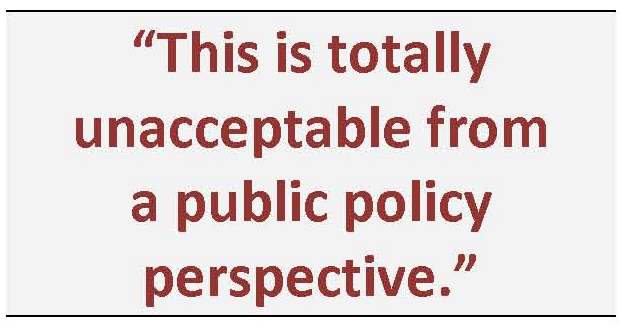
GATINEAU – Canada’s DTH carriers must do a far better job of carrying French-language programming in all regions of Quebec, said the Bloc Québécois, the syndicat des communications de Radio-Canada (SCRC) and the CBC, who spoke in near unison at the CRTC’s Direct-to-Home policy hearing on Wednesday.
The three groups each took their turn on November 17, calling on the Commission to force the DTH companies to carry more French-language programming than they currently do. They noted that while the various regional TVA affiliates are carried by both DTH companies, the lack of Radio-Canada carriage is disconcerting.
Bloc MP Carole Lavallée (Saint-Bruno – Saint-Hubert) said Quebecers in all regions should have access to local programming and that the Commission should ensure that all regional stations are available. In the case of Radio-Canada, it should get “unconditional” carriage, she said.
It’s unacceptable, Lavallée said, that DTH subscribers in Saguenay-Lac-Saint-Jean or La Mauricie don’t have local Radio-Canada programming.
Robert Bouchard, Bloc MP for Chicoutimi-Le Fjord, noted that on one hand the CRTC has encouraged the broadcasters to increase local programming, yet doesn’t require the satellite distributors to carry the channels. This is no longer tolerable, he said, adding that DTH subscribers must get access to the same programming as cable subscribers.
“We think the CRTC is the organization that can impose a rule on DTH companies that says we favour regional information and that the DTH companies must make Radio Canada available to viewers,” he said in French responding to a question from national commissioner Louise Poirier.
CBC/Radio-Canada also used its appearance before the commission panel to clarify its proposal to increase the number of local stations carried by Shaw Direct and Bell TV. In addition to maintaining its position that the ultimate goal is to have a local-into-local regime, a top priority is to solve the inequity carriage issue in Quebec. To fix the situation, CBC has proposed an alternative to the “one per province” rule.
Louis Lalande, executive director of regional French services, highlighted the problem facing Radio-Canada in Quebec. He noted that Shaw Direct carries a single Radio-Canada station (CBFT-Montreal) yet distributes five TVA stations and four from V.
“For Shaw subscribers, Radio-Canada only exists in Montreal,” he said in French. “This is totally unacceptable from a public policy perspective.”

The public broadcaster has proposed two mechanisms that it says will first of all “fix the basics” and offer incentives to increase the number of local stations carried on DTH. Its plan goes significantly further than the “one per province” rule by proposing that each DTH company carries three-quarters of all TV stations in a province by ownership group.
“It means that Bell would have to add two Radio-Canada and one TVA. Shaw would have to add four Radio-Canada because they already carry three-quarters of TVA stations, they carry five of six stations and they carry four of the five V stations. But they carry only one RC station,” explained Anne-Marie Migneault, director of regulatory affairs.
CBC also highlighted why partial channel distribution isn’t more popular. Fred Mattocks, GM of media operations and technology for English services, noted that the partial channel only shows local content at a specific time. When local content isn’t available, the screen in black, he added.
“That is not a viewer-friendly experience,” he told commissioners. “People don’t like it and we know this because they complain to us.”
Under questioning, Steven Guiton, VP and chief regulatory officer at CBC, said that if Bell and Shaw believe partial distribution is such a good thing, then they should subject their own stations to this type of carriage. “If partial channels really worked, we wouldn’t be where we are today. We’ve heard this every time we have a licence renewal that partial channels is an option. We don’t see very many of them out there and the reason is they’re not very good. And that’s the fact.”
Rogers Communications expressed concern during its opening remarks that vertical integration in the broadcast and DTH industry will negatively the company’s broadcast holdings, particularly OMNI. Rogers noted that Shaw only carries the two Toronto OMNI stations, OMNI BC isn’t carried by Shaw and is only available to half of Bell TV’s subscribers. In addition, the Calgary and Edmonton OMNI’s aren’t distributed by either DTH provider.
“We are deeply concerned about what consolidation might mean for the future carriage of our stations compared to those our competitors,” said Alain Strati, Rogers’ VP specialty and development. “We believe there is a real risk that without regulatory intervention, DTH providers will carry their affiliated broadcaster stations – in SD and HD – while our are either left out completely or only carried in SD.”
The media and communications giant also expressed concern over the CRTC’s DTH framework in that it accords no access rights to the OMNI group of stations. “We believe it is fundamentally unfair that the OMNI stations are considered priority signals for all terrestrial BDUs but are forced to negotiate carriage on satellite,” Strati noted.
The company wants the CRTC to change the rules so as to give OMNI stations the same status as all other conventional over the air stations.
The DTH Policy hearing wraps up Thursday.


